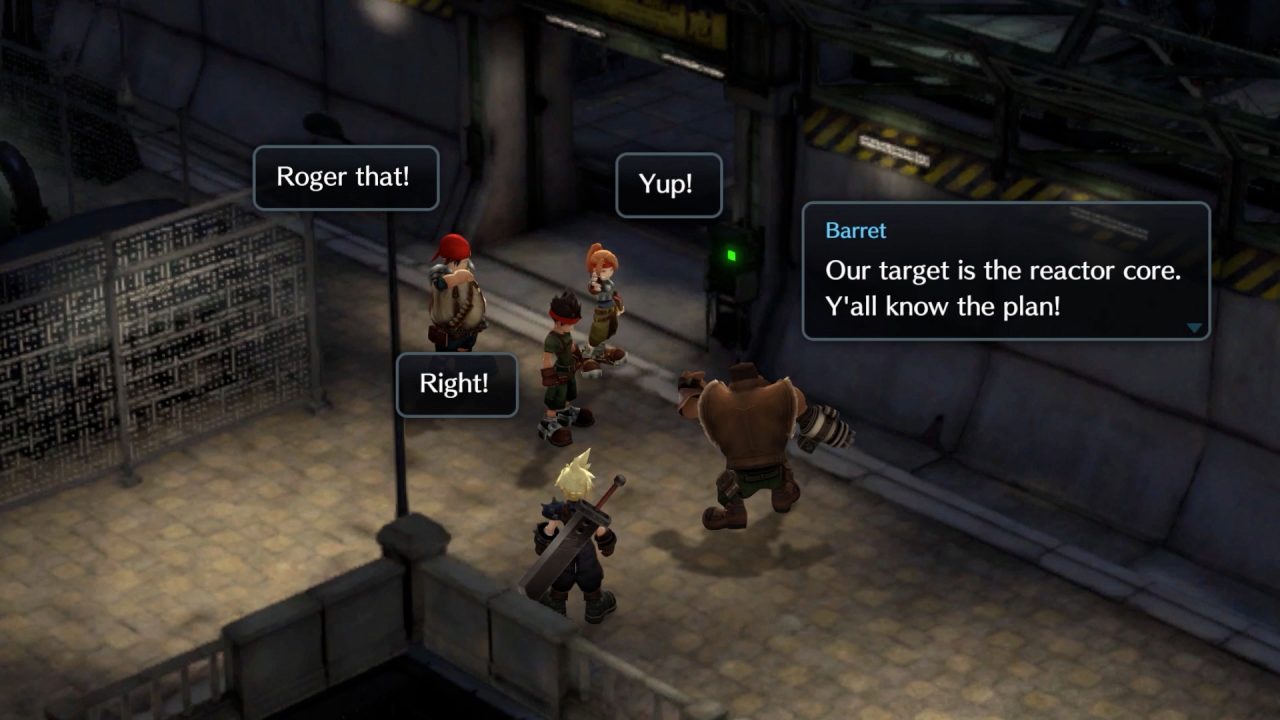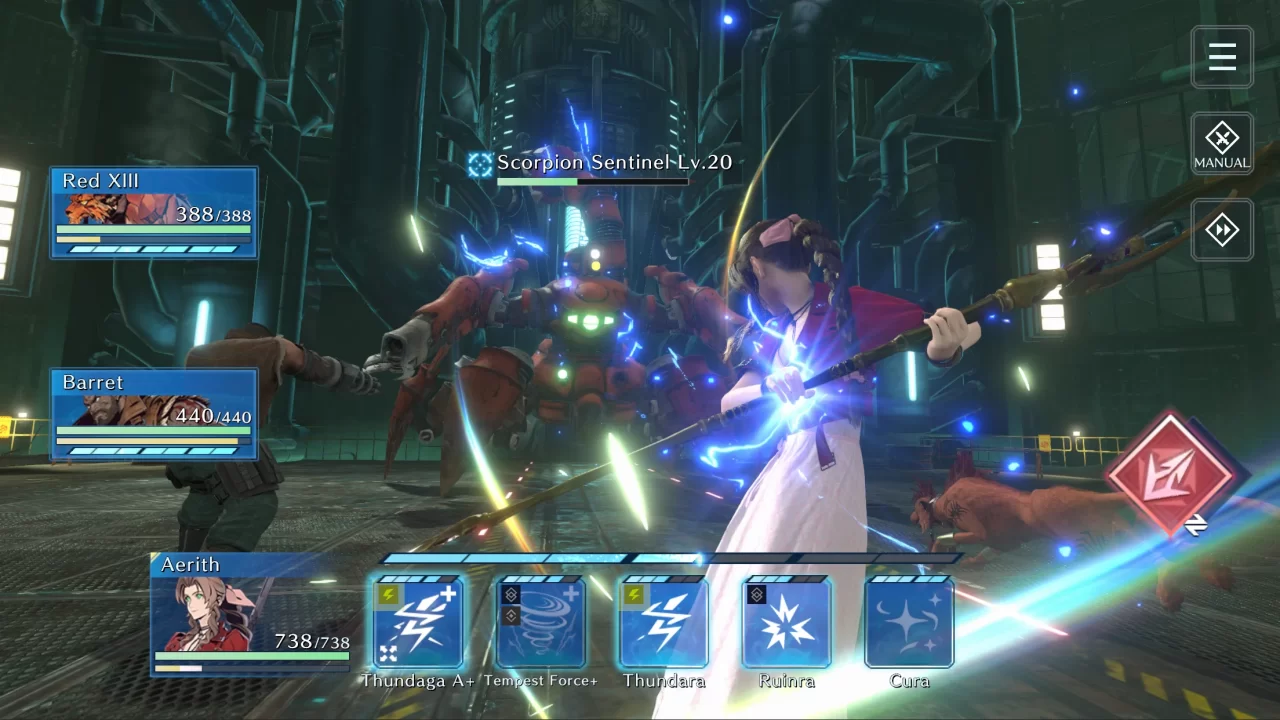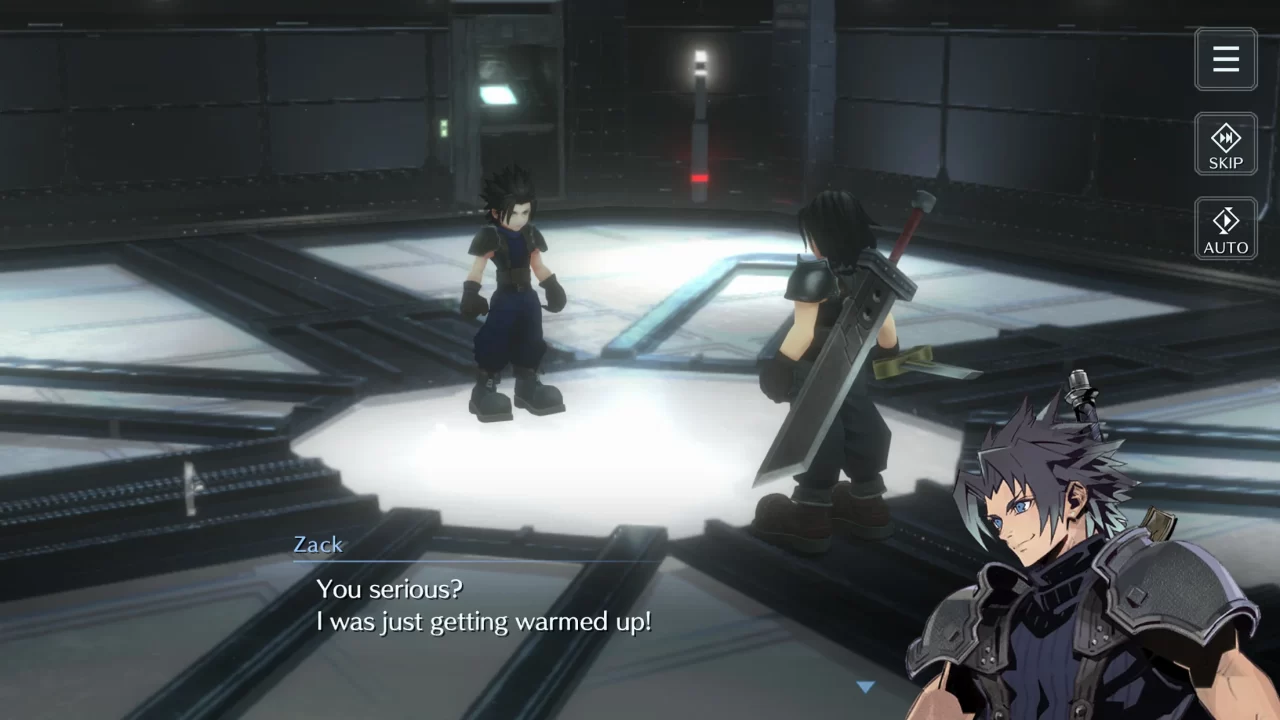Within the greater Final Fantasy continuum, the Final Fantasy VII brand has forged an identity of its own for many years. Spin-off titles such as Dirge of Cerberus, Advent Children, and Crisis Core helped flesh out overarching narratives and proved very popular with fans. Now, Square Enix‘s attention is apparently once again transfixed on Final Fantasy VII‘s supporting properties. Alongside Final Fantasy VII Remake and the upcoming Final Fantasy VII Rebirth, we’ve also seen a remaster of Crisis Core and, err, Final Fantasy VII: The First Soldier. Because we all wanted a mobile MOBA game based on a critically successful RPG! I digress, but following hot on the heels of one failed-and-already-closed-down mobile game, we now have Final Fantasy VII Ever Crisis!
Let’s cut straight to the chase: Ever Crisis is the Final Fantasy VII universe, gacha-fied. The premise is to witness events from Final Fantasy VII, Crisis Core, and The First Soldier in digestible story chunks. It is designed from the ground up to play like a mobile game — despite various forms of marketing obscuring this fact, it is not a “remake” of any of the Final Fantasy VII properties. You pick a mission from a menu, a cutscene plays, and an auto-battle follows. Rinse, repeat. That is the basic structure. Some areas are slightly fleshed out to be “dungeons,” but they are only two or three screens in length and are mostly just there for flavour.
You play through them in the story missions, which also unlocks them officially as replayable Criterion Dungeons. It’s cute enough to romp through familiar areas once more, but the immersion factor is largely absent. Even iconic areas such as the first Mako Reactor from the opening sequence of Final Fantasy VII feel like little more than tick-boxes of obtained loot and battles fought. It’s a funny thing, really; most field maps in RPGs are just a visual set dressing for cutscenes, battles, or opening chests, yet their presentation in Ever Crisis rings a touch more hollow than traditional RPGs. I suppose, when the rest of the game is navigating menus, it makes one wonder if superficial explorable areas are necessary.
It’s unfortunate that a lot of the marketing for Final Fantasy VII: Ever Crisis seems to portray the game as a one-for-one remake of the original game with updated field map and battle graphics when that is simply not the case. However, despite the jarring nature of a beloved game and two of its spin-offs reconstructed in a very middling mobile format, it’s enjoyable having these side stories accessible with a consistent delivery. I didn’t even realise The First Soldier had a storyline until I played Ever Crisis, nor that it’s considered canon alongside Crisis Core. I think this is the biggest takeaway of the game for those who aren’t interested in the inevitable grind and power creep of mobile games.
The order in which story segments become available is staggered across the three games, so you start with a chunk of Final Fantasy VII, then move across to what’s currently available for Crisis Core (i.e., very little), and then spend some time with The First Soldier. It’s a fresh approach that will probably be more enjoyable to those already familiar with at least one of the games. It completely shakes up how the narrative is delivered and means you’re thinking about different story elements from across the IP. However, it’s still rehashing storylines that we already know, and they’re obviously going to be drip-fed to us over a long time period to keep the game sustainable as a live service.
One of Ever Crisis‘s undeniable strong points is its visual presentation. The graphics in non-combat scenes are heavily influenced by Final Fantasy VII‘s beloved style but updated to make more sense with modern character models. These are more detailed; gone are the blocky hands and three-piece ponytails of yore. Some of the impact from specific animations is lost — Yuffie’s repeating gut punch springs to mind — but I think this highlights what a good job the original Final Fantasy VII team did to create such memorable moments with their comparatively limited technology. The combat graphics also mirror Final Fantasy VII‘s approach of having much more detail and realistic character models. The ones used in Ever Crisis are reminiscent of those seen in Final Fantasy VII Remake. They have a slightly PS3-era vibe to them, which could be to keep requirements lower for different mobile devices or simply because free-to-play games are there to make money while having shoestring budgets.
Having such lush pre-rendered backgrounds and sparkly battle graphics made me wish just one thing: that Square Enix had given the more recent releases of Final Fantasy VII, Final Fantasy VIII Remastered, and Final Fantasy IX the same attention. I can respect that we’re talking about entirely different developers here, with Final Fantasy VII: Ever Crisis developed by Applibot rather than in-house at Square Enix. The effort that Applibot put into these visuals highlights how much more work Square Enix could have done on the modern versions of their classic catalogue, but I’m sure someone in a board meeting knows more about that kind of thing than I do. And then there’s that lingering sour taste that Ever Crisis‘s initial marketing seemed to want to push the game to be something that it wasn’t (a remaster in line with Final Fantasy Remake), yet retaining more classically-inspired graphics: something akin to Final Fantasy XV: Pocket Edition.

This will come as no surprise to anyone who’s familiar with music from the Final Fantasy VII games, but the accompaniments in Final Fantasy VII Ever Crisis are outstanding. With a wonderful pool to draw from (haha gacha pun), every track ranges from instrumental updates to all-out arrangements of the original soundtrack. It was interesting to hear interpretations of tracks used regularly in Final Fantasy VII but perhaps not so much in Remake, such as the World Map theme. And that’s not even touching the music from Crisis Core and First Soldier, which holds up exceptionally well when compared to Nobuo Uematsu‘s iconic mainline compositions.
It’d be remiss of me to gloss over Ever Crisis‘s monetisation schemes, but they are pretty much the industry standard at this point. I’ve mentioned previously that the game utilises a gacha system; while this is true, it isn’t the conventional practice of drawing for characters. All of the characters are unlocked for free with the gacha in place to draw their weapons. On the surface, this is a kindness, and yes, it means everyone can play their favourite character without breaking the bank. It’s a little less consumer-friendly when you scratch the surface, however, and see the weapon draws for what they are: the only real way to strengthen your character. You need to obtain multiple duplicates of weapons to advance their rarity and unlock their level caps to pursue the perpetual goal of strengthening your characters. Further evidence on this point is characters’ ability to equip multiple weapons simultaneously, with each weapon granting abilities and stat boosts depending on their slot. That’s a lot of gacha draws.
Further monetisation tactics include the omnipresent season pass, with rewards ranging from Gil to upgrade materials and, honestly, not much else. It’s very boring, yet limits your progression behind a paywall. Nothing on the season pass is unobtainable through regular gameplay, but with the usual restraints such as Stamina and daily quests, you’re realistically time-gated with how quickly you can make any meaningful progress. This won’t be an issue for people willing to take things slowly; as with any mobile game, you can experience the story for free, and paying real money would only appeal to those with limited restraint (such as myself) or a desire to play competitively.
Aside from the season pass, there are also options to buy premium currency, which you can use for premium currency-gated gacha spins. Yes, this game differentiates between currency you’ve earned in-game and paid currency, and the developers are not afraid to discriminate which banners you can participate in based on how much you want to spend. “Free” currency comes in at an abysmally slow rate once you’ve gotten past the initial sugar rush of Gift Box redemptions, which is a pretty embarrassing hook-line-and-sinker tactic for training players to believe they need to pay. Pro tip: you don’t. The more we collectively push back against predatory monetisation tactics like this, the less financially lucrative such practices will be, and the more these games will flop, perhaps indicating to developers that their customers deserve quality games instead of being groomed into gamblers. You might say it’s not that deep, but it is, and it’s why games like this either thrive or crash and burn.
Anyway, doom and gloom aside, Ever Crisis has plenty of story opportunities for those interested in the Final Fantasy VII universe. It breaks narrative points up into digestible chunks, and while there is limited content available at launch, it could potentially cover three games’ worth of complete storylines at some point in the future. I wouldn’t hold my breath on this happening anytime soon. What will they do when the games’ storylines are complete? Make up new ones? It leaves an uncertainty that makes me question the longevity of this title, but at the same time, it will be a fun little game to play alongside the Remake releases. All mobile games, nay, all live service games in general, must come to an end one day, and if this can keep going until the third and final Remake installment, then it will have served a purpose. From what I’ve seen so far, the First Soldier storyline is compelling and drew me in just as much as any of the other Final Fantasy VII arcs, but once this mobile game is closed down it will, once again, vanish forever. It’s a shame Square Enix isn’t interested in investing these storylines into more tangible and permanent games, but that’s modern gaming for you.
Overall, Ever Crisis is an easy recommendation for fans of Final Fantasy VII — in any form — if you go into it knowing what to expect with its mobile caveats. So long as you aren’t vulnerable to excessive spending to your detriment, it brings three Final Fantasy VII IPs to modern audiences while giving them a consistent aesthetic that helps them all feel truly connected. Applibot’s other Square Enix mobile project, NieR Re[in]carnation, has been running for over two years now, so that helps establish some faith that Ever Crisis won’t close down when we blink. Games like this are best enjoyed as a slow grind over a long period of time — months and even years — so bear this in mind when deciding how much you want to commit to it. Enjoy the game for what it is, progression walls ‘n’ all, and perhaps come back to it every few months to see what’s new.




